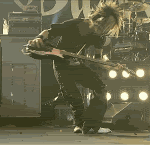Tutorial (tutoring) is a help or who are academic tutoring by tutors to students (tutee) to help smooth the process of learning madiri individual students or groups associated with teaching materials. Tutorials conducted in person or remotely based on the concept of independent learning.The concept of independent learning in the tutorial contains an understanding, that the tutorial is a learning aid in an effort to trigger and stimulate self-reliance, discipline, and self-initiative in learning denganminimalisasi student intervention on learner / tutor.Tutorial is a basic principle of "independent student" (student's independency). The tutorial is not there, if independence does not exist. If students do not learn at home, and come to the tutorial with the 'empty head', then there is the "lecture" and not a tutorial.Thus, the tutorial should be distinguished conceptually firmly with the "college" (lecturing) prevailing in universities face to face, in which the role of teachers is huge.The main role of tutor in the tutorial are:
(1) a "trigger" and "hyper" independent student learning, thinking and discussion, and (2) "mentor, facilitator, and mediator" students in building knowledge, values, attitudes and skills of academic and professionalindependently, and / or in the face or solve the problems in learning independently; provide assistance and guidance to students on their own understanding of course materials; provide feedback to the student in person or via a communication tool; provide support and guidance, including motivating and help students develop their learning skills.To be caught in the tutorial are not ordinary lectures, built up a relationship bersetara, able to play the roles above, and tutorials to be effective, tutors need to prepare questions that serve to: (1) aroused the interest of students to the material being discussed, (2 ) to test students' understanding of subject matter, (3) provoke students to participate actively in the tutorial, (4) diagnose student weaknesses, and (5) leads students to be able to answer the problem at hand (Hyman, in Suroso, 1992) . Tutors also stimulates students are actively involved in the discussion of remedy: (1) the problems found in student learning modules, (2) the competence or the concept of essential subjects, (3) issues related to performance (practice / practicum) students inside / outside tutorial classes, and (4) issues related to the teaching profession were found when students run the day-to-day duties as a teacher.To support the implementation of roles and functions of the above, tutors need to master a skill some basic skills tutorial, namely: (1) open and close the tutorial, (2) ask further, (3) provide reinforcement, (4) make the variation; ( 5) explains, (6) leads a small group discussion, (7) classroom management, and (8) teaching small groups and individuals.The eight types of basic skills tutorial is basically the same as teaching basic skills, which was adapted from the "Sydney Micro Skills", developed by Sydney Universitytahun 1973.a. Principles TutorialSome basic principles that should be understood by the tutorial tutors tutorial for effective implementation, and not stuck in the usual situation of course, is:A. Tutor-tutee interaction should take place on a metacognitive level, that level of thinking that emphasizes the skills formation of "learning how to learn" or "think how to think" (why this is so, how did it happen, etc.).2. Tutors should guide the tutee with meticulous step in the overall learning process undergone by the tutee.3. Tutors must be able to push the tutee to the extent of understanding (understanding = C2) deep so as to produce knowledge (create = C6) are durable.4. Tutors should refrain from giving information only (transfer of knowledge / information), and challenged the tutee to dig up information / knowledge itself from the various sources of learning and field experience.5. Tutors should shy away from efforts to give an opinion on the truth and comment or discordant qualities of mind (brainstorming) tutee.6. Tutors must be able to foster discussion, comments and criticisms antartutee, so as to enhance the intellectual skills, psychomotor, democratic attitude, cooperation, and interaction antartutee.7. Kuputusan everything in the tutorial should be taken through the process of group dynamics in which the tutee in each group to give false thoughts.8. Tutors should avoid the tutor-tutee interaction patterns, and develop patterns of tutee-tutee interaction.9. Tutors need to do more tracking (probing) against any truth of the answers or opinions tutee, the tutee to ascertain the truth of the answers or opinions expressed tutee. (You believe so, why, why?).10. Tutors should be able to make variations of the stimulation / excitement to learn, so the tutee did not feel bored, bored, and / or despair.11. Tutors should monitor the quality of the learning progress tutee by directing the study to the extent that in-depth understanding (depth understanding).12. Said to realize the possibility of potential problems interpersonaldalam group, with small-scale immediate intervention to maintain the effectiveness of the work process and group dynamics. tutor needs to continue working (with power) with the tutee, and always take responsibility for learning in groups. However, at any time tutor also be hands-off (power off) when the tutee learning process has been going well.b. Tutorial modelsTutorial model is a conceptual analog of the tutorial that is used to suggest how a process should be done tutorial. Model tutorial can also be interpreted as a conceptual structure of the tutorial that can help provide guidance or direction to tutor in managing and developing the tutorial activities, in order to achieve the desired objectives effectively. A tutorial models, developed on the basis of considerations of philosophical, psychological, social, cultural nature of tutee, tutor, materials, etc..Basically, there are various models known in literature tutorial tutorials. Several models of tutorials that can be used by a skilled tutor for the Open University tutorial on tutorial models which have been deliberately developed in order to UT Tutor Accreditation Program (PAT-UT), namely: (1) PAT-UT I, (2 ) PAT-UT II, and (3) PAT-UT III. In addition, the tutor can also use the models of active tutorial, which many developing creative and innovative use of learning in Indonesia such as: Cooperative Learning, Jigsaw I and II, Constructivism, Troubleshooting / Case Studies, Creative & Productive Model, Skills Training , Simulation and Role Playing, or the Adult Learning Model.c. Tutorial modeAt UT, there are four tutorial mode, namely: to-face tutorials (TTM), written tutorial (tutis) through surat-menyurat/krespondensi; tutorial elektorik (tutel) via television, radio, mass media, and internet, and online tutorials (Tuton ) via the Internet. For students there are two modes PENDAS tutorials are provided, namely (1) Tutorial Face to face (TTM), including Face to Face Mandatory Tutorial (TTM) and Face to Face Tutorial On Demand Elementary Students (TTM-ATPEM). And (2) online tutorials ( Tuton) via the Internet.
About Me
- Yusuf Agung Nur Grahito
- SURAKARTA, JAWA TENGAH, Indonesia
- Pernah bersekolah di SDN Begalon 2 Surakarta berlanjut ke SMP N 2 Grogol, Skh. Lalu ketika semester 3 pindah ke Banjarnegara, bersekolah si SMP N 2 Banjarnegara dikarenakan perintah orang tua. Dan saat semester ke 4 pindah lagi ke Solo dan bersekolah di SMP N 25 Surakarta. Sekitar tahun 2004/2005 lanjut ke SMK TP 2 Surakarta dan lulus pada tahun 2008. Mulai berkuliah di POLITEKNIK INDONUSA SURAKARTA pada tahun 2010. Minat saya hanya ingin bekerja dengan imajinasi saya, bukan dengan tenaga maupun berfikir hitung-hitungan yang ribet, hehe.. Saya ingin menjadi seorang desainer dan musisi.. :-D
Monday, May 21, 2012
Subscribe to:
Post Comments (Atom)










0 comments:
Post a Comment
Coment here